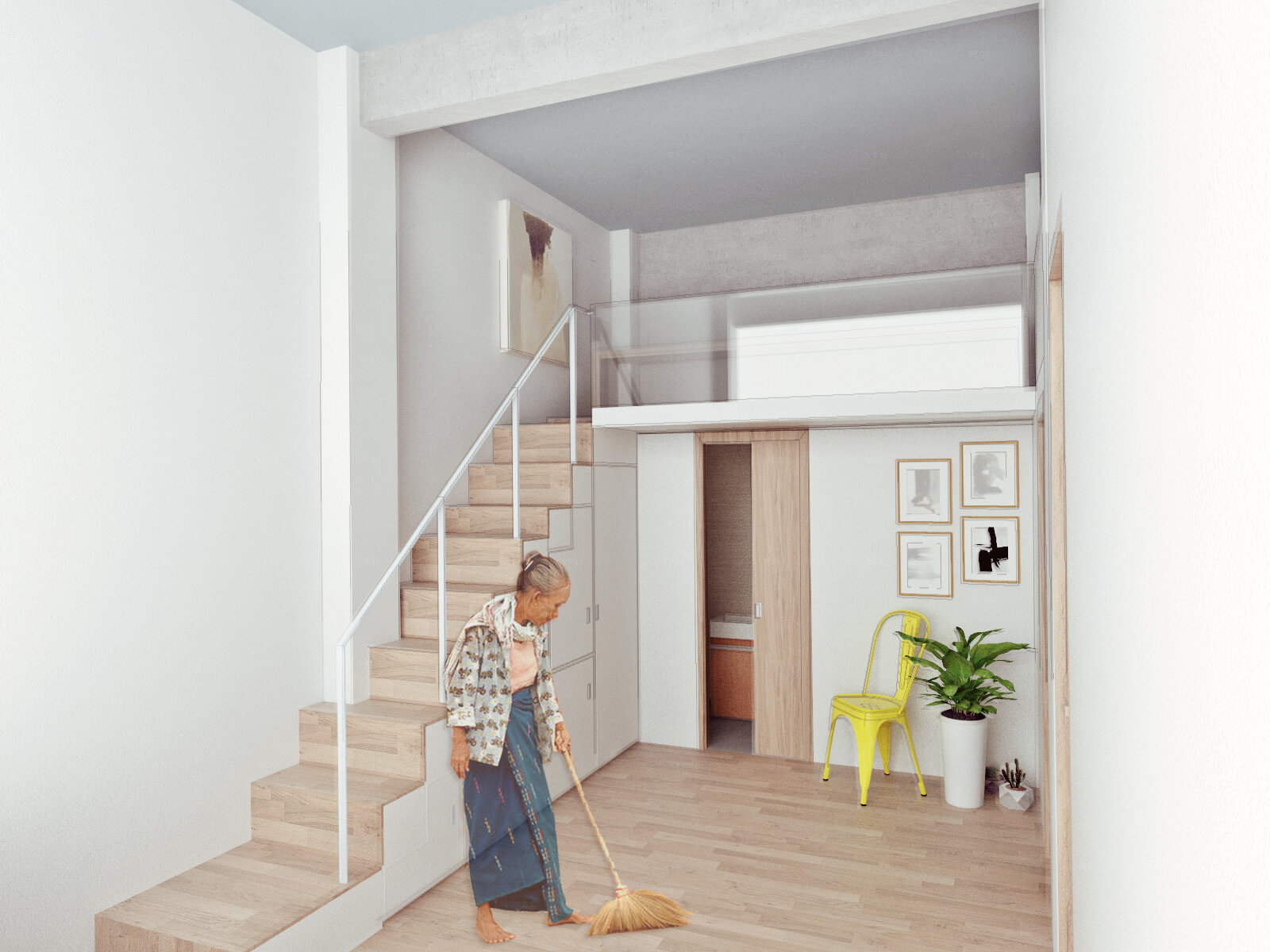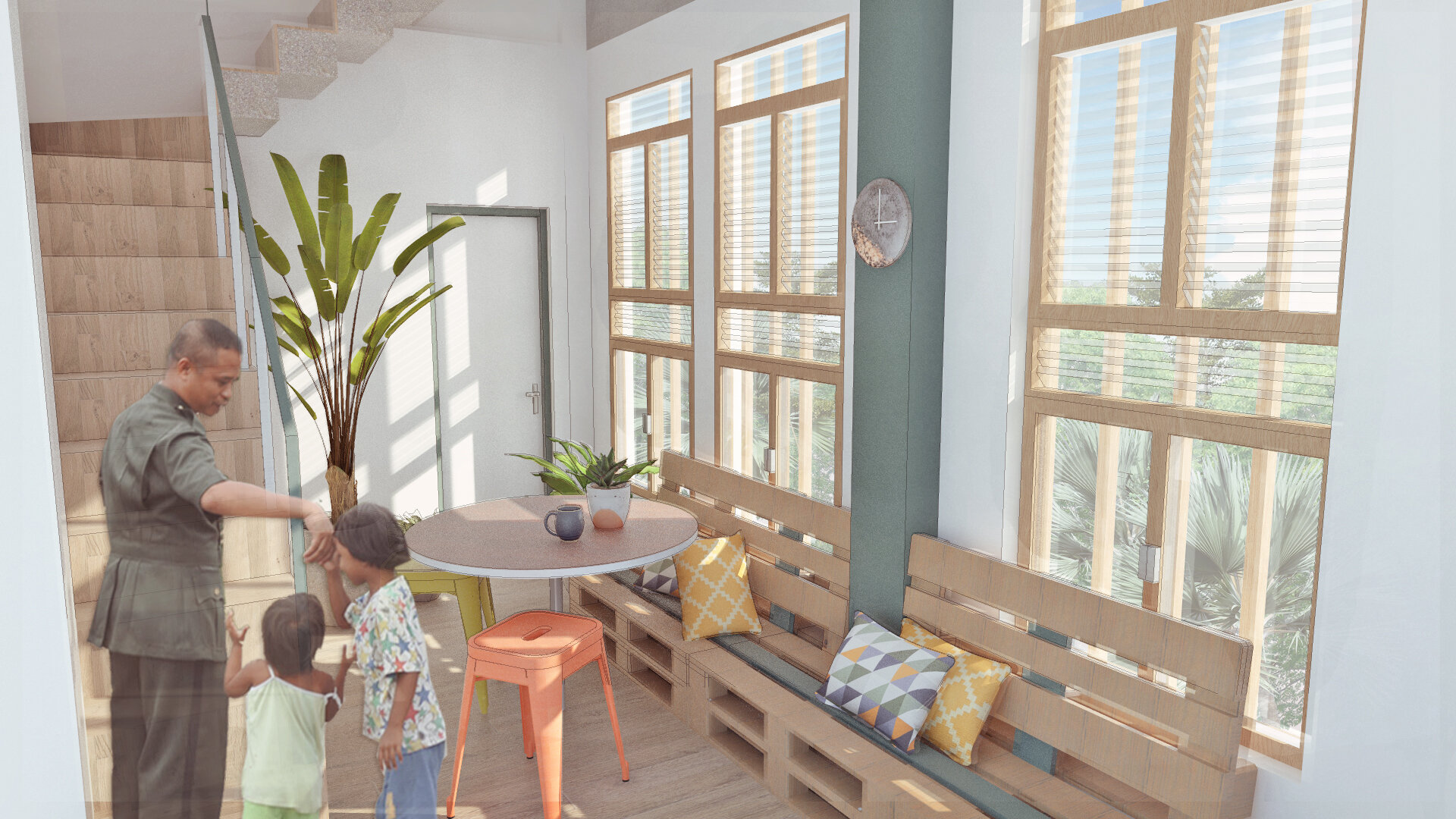SALu-SALo
NOUN. To gather together and enjoy each other’s company.
LOCATION San Mateo, Rizal PH
AREA 26,156 sqm
TYPE Housing
YEAR 2019
STATUS Thesis Project (Bachelor’s Degree)
TEAM Fifi Gomez
CLIENT N/A
CREATING SUSTAINABLE FILIPINO COMMUNITIES THROUGH MIXED COMMUNITY LIVING
The housing backlog in the Philippines, which is in the millions today, increases every year. Many people attribute it to the shortage of the housing supply, yet there are other factors that influence this. Many built housing projects are unlivable, as they are inaccessible and of poor quality. They are also unaffordable to the lower and middle classes. Finally, many of these are socially unsustainable, such that people do not stay in these communities as there are no genuine social connections. All these problems arise from a lack of consideration of the needs of the users. Housing must be adaptable, accessible, affordable, and provide a sense of community. These are exhibited in co-living, which is a new way of living that revolves around communal spaces and flexibility. This concept can be utilized in Philippine housing to alleviate issues that are brought about by deficiencies in the accessibility and quality of housing. Communal spaces play vital roles in establishing the concepts of housing equity, social sustainability, and Philippine neighborhoods. This creates a human-centric Filipino co-living model, and in turn, a sustainable and inclusive Filipino community. These are further translated through applying co-living design strategies, such as flexible design, sustainable technology, and inclusive design. Each of these has key features that are exemplified in the spaces such as modular pre-fabricated systems, renewable energy, and a mixed-income community.
CO-LIVING AS A STRATEGY FOR BETTER COMMUNITIES
Co-living is one of the new housing trends in the world today. It is a new way of living, which focuses on community, accessibility, and flexibility. It is characterized by communal spaces and services. With the global phenomenon of increasing housing prices, many accept that the idea of ownership of real-estate is unattainable, which is why the rise of co-living is appealing to the market today. Access is becoming more important than ownership, because of its flexibility.
This concept can be utilized in Philippine housing to alleviate issues that are brought about by deficiencies in the accessibility and quality of housing. Communal spaces play vital roles in establishing the concepts of housing equity, social sustainability, and Philippine neighborhoods.
THE SHARED PROGRAM
In this co-living housing development, the shared spaces connect the private and public spaces. Buildings are connected to each other through common open spaces that can be accessed by all residents. Within these buildings, a “living corridor” or the central shared space connect all the residential units to each other. Consequently, in the dwelling unit, private and shared spaces can be created as dictated by the user. Some Filipinos perceive the “sala”, or a space that combines the receiving area, living room, and dining area, as public as the neighbors they know are free to come in unannounced. Generally, the shared spaces act as links and intersection spaces where interaction can occur between residents to create a sustainable community.
UNIT MODULES
Instead of having typical units that are based off how many bedrooms fit into the space, the dwelling units are composed of a certain number of 3m x 3m modules that can accommodate several various spaces. The number of modules in a specific unit type depends on how many people will occupy it. This strategy prevents overcrowding, which is one of the major factors that leads to the deterioration of quality of the residential space. The user is free to decide the function of the space, as the module is easily adaptable to various needs. Two or more of these can also be combined to fit bigger spaces. The 3x3 module is translated as either a built space or an extension. Units are given at least one of both. The built space contains the toilet & bath, as this is a necessary space and would be difficult for some to build on their own. The extension allows the user to expand their unit, which also instills a sense of responsibility as they are given the ability to grow their space. The 3x3 module can be arranged in different ways to fit into the regular structural grid. The number of floors and width of the unit can alter as modules are added. This variety allows for people to customize their unit to suit their needs.














